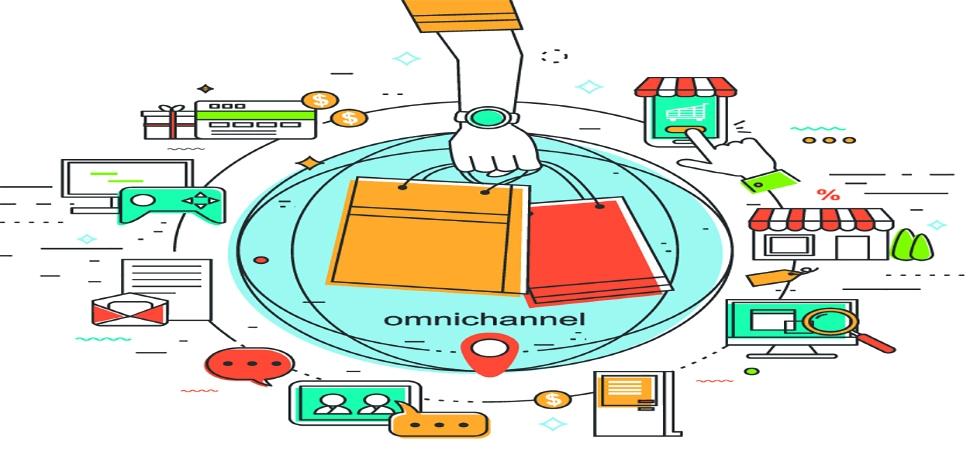ul. Strzegomska 2-4
53-611 Wrocław
NIP 8992786490
KRS 0000608120
REGON 363987723
Global4Net Sp. z o. o.
+48 71 358 41 00
© 2009 – Global4Net. All Rights Reserved.

Why should you implement omnichannel in your online business? Because the internet client is picky and uses the network to meet his high expectations. He is also a buyer oriented and determined to make a specific purchase and sometimes needs only tips to direct his steps towards a specific product. Therefore, he uses many channels at the same time, because each of them brings him a different benefit. On the smartphone, he performs preliminary research, on the laptop finalizes the transaction, and in the stationary store receives the order. This is a common practice for an online consumer and his expectations should be met.
It’s easy. There are no queues or the hustle and bustle on the internet, which sometimes includes shopping in a stationary store. The situation is similar with opening hours. The website is open 24 hours a day. The access speed is also completely different, practically at the click of a button. Thanks to this, shopping itself is shorter.
An overview of the full range may be available over the internet. Very many customers, being in a stationary store, use mobile devices to compare prices or check reviews. Also for many of them the stationary store is only an exhibition where they can see the product they are interested in. You can’t be nervous about this, just turn it in your favor.
The main and most obvious advantage is the growing number of online purchases. This means the need to develop your own store to meet customer expectations and match the competition.
The world of social media and e-commerce is increasingly merging and mixing, as evidenced by the creation of Facebook Marketplace. More and more online stores are also announced on Instagram, between celebrity photos also advertising various products. You must ensure that your e-commerce business is also present where potential customers may be.
For many companies, the implementation of omnichannel is associated with several difficulties. First of all, sometimes it means some organizational changes. It is mainly about reorganizing sales processes to enable online sales. Adjusting warehouse operations, which must work with online and offline sales, is a challenge. Learning new procedures creates fear of change. Also the fear of a high cost may deter this idea.
The introduction of multi-channel sales allows, however, to significantly increase the quality of customer service. Checking the inventory in a stationary store via the internet is a great help for many consumers. On-site collection of products purchased online (click & collect) is a big and bold step for many e-commerce businesses thinking about their customers. Similarly, when submitting online complaints about a product purchased stationary, and vice versa – a preview of the complaint status on the network that has been made on the spot.
Omnichannel also allows the integration of offline and online purchases by sharing mobile devices in stationary stores or offers checking product information via QR codes. It is worth paying attention to, for example, eobuwie.pl, which in a stationary store completely limited access to the assortment and mixed together two worlds. In a stationary store, shopping is done on the tablets provided on site, which searches for the available product in the right size and then orders. The service person brings a box with selected shoes to try on. Before we even see the goods live, we have access to full product information along with information on availability and price. The number of ebouwie.pl stores, which have appeared all over Poland, is a proof of the company’s success.
Empik, RTV Euro AGD and Decathlon have successfully implemented and continue their click & collect policy. With it, you can make a purchase online and virtually immediately go to the store to collect your order. However, if the customer prefers to pay in cash on the spot, of course it is possible. Needless to say, they offer a multi-channel solution across many devices with full visual consistency and customer service. It means uniform prices and discounts, inventory, and even a shared basket.
Leroy Merlin went a step further and provides printouts of QR codes under products so that a customer shopping in a stationary store can, using a smartphone, read reviews and check product ratings or availability at another point. This level of integration, which naturally occurs in synchronization between the browser and the application, is proof that a stationary store does not have to be afraid of onlin stores.
E-commerce can work with offline stores as long as it prepares the right marketing strategy and internal organization of the store. The very existence of an omnichannel in a particular brand builds its reputation as a modern, developing company and one that proves that the customer is important. Since online shopping is characterized by high convenience, the integration of many channels, including landline, means simultaneous modernization of the brand and recognition of the need to remain in physical contact with the customer. Omnichannel is an approach that accepts that clients have different needs and the company wants to meet them in the best form for both parties.
Write to us




